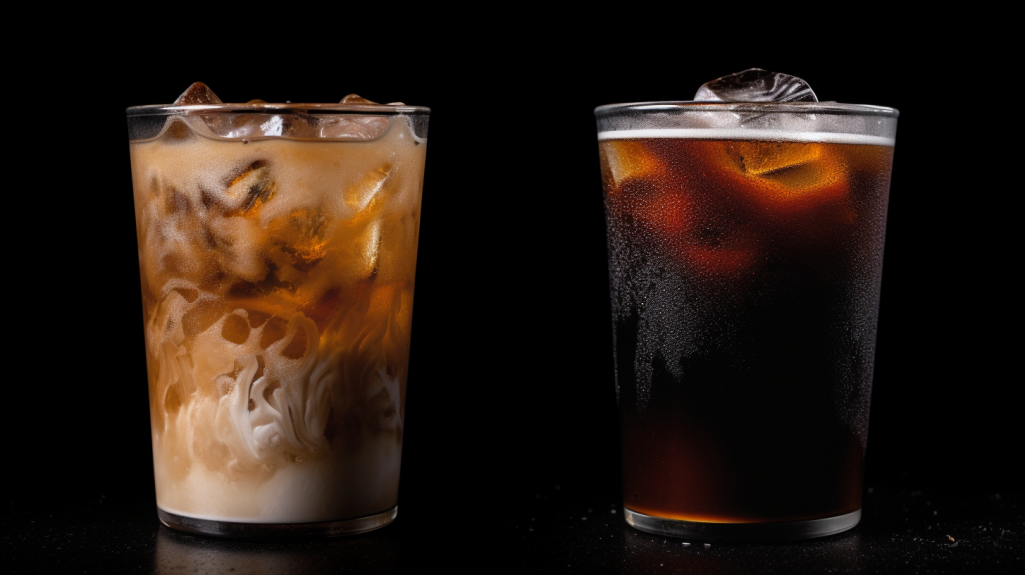Coffee, the elixir of wakefulness and productivity, comes in various forms, each with its unique taste, preparation method, and cultural significance. Cold Brew, Espresso, and Regular Coffee are three mainstays in the world of coffee, each catering to diverse preferences and palates. Let’s delve into the depths of these caffeinated wonders and explore the subtle yet significant differences that set them apart.
Cold Brew: The Chilled Revelation
Cold brew coffee has taken the world by storm, especially during scorching summers. Unlike its counterparts, cold brew is prepared by steeping coarsely ground coffee beans in cold water for an extended period, often 12-24 hours. This slow steeping process results in a smoother, less acidic, and naturally sweeter coffee, making it a favorite among those who prefer a milder taste without the bitterness that accompanies hot brewing methods.
Espresso: The Bold Shot
Espresso, originating from Italy, is the concentrated coffee lover’s dream. It’s made by forcing hot water through finely-ground coffee under high pressure. This method extracts a small, strong shot of coffee that serves as the foundation for various other popular coffee drinks like lattes, cappuccinos, and Americanos. Espresso is revered for its rich, full-bodied flavor and a layer of crema, a golden foam that crowns a well-pulled shot, adding a touch of elegance to its robust taste.
Regular Coffee: The Timeless Classic
Regular coffee, brewed through methods like drip brewing, pour-over, or French press, is the most common form of coffee worldwide. Coarse coffee grounds are steeped or percolated with hot water, producing a familiar beverage enjoyed by millions daily. The taste of regular coffee can vary widely depending on factors like the type of beans used, the brewing time, and the water temperature. It generally offers a balanced flavor profile, ranging from mild to strong, catering to a wide audience of coffee enthusiasts.
Differences in Flavor and Strength
Cold brew, due to its lengthy steeping process, is remarkably smooth, with subtle hints of sweetness and minimal acidity. Espresso, on the other hand, is bold and intense, with a strong, concentrated flavor that’s often the base for other coffee drinks. Regular coffee falls somewhere in between, offering a balanced flavor that can be adjusted based on brewing time and bean selection.
Caffeine Content
While the caffeine content varies based on factors like the brewing time and the type of beans used, espresso generally contains the most caffeine per ounce due to its concentrated nature. Cold brew, because of its longer steeping period, can also be quite strong, but it’s often diluted with water or milk. Regular coffee usually has a milder caffeine content compared to espresso.
Versatility and Creativity
Espresso forms the foundation for a plethora of coffee-based drinks, from lattes adorned with intricate latte art to velvety cappuccinos. Cold brew, because of its smooth and less acidic profile, is an excellent canvas for creative additions like flavored syrups, milk alternatives, or even alcohol, making it a favorite among mixologists. Regular coffee, while simpler, provides room for experimentation through various brewing methods and bean combinations, allowing coffee enthusiasts to explore different flavors and aromas.
Conclusion
In the world of coffee, the choices are as diverse as the people who enjoy them. Whether you savor the boldness of espresso, the smoothness of a cold brew, or the comforting familiarity of regular coffee, each cup tells a unique story crafted from the beans’ origin, the brewing technique, and the creativity of the maker. So, the next time you take a sip of your favorite brew, remember the intricate processes and distinct characteristics that differentiate cold brew, espresso, and regular coffee, and celebrate the rich tapestry of flavors that coffee enthusiasts cherish worldwide.
